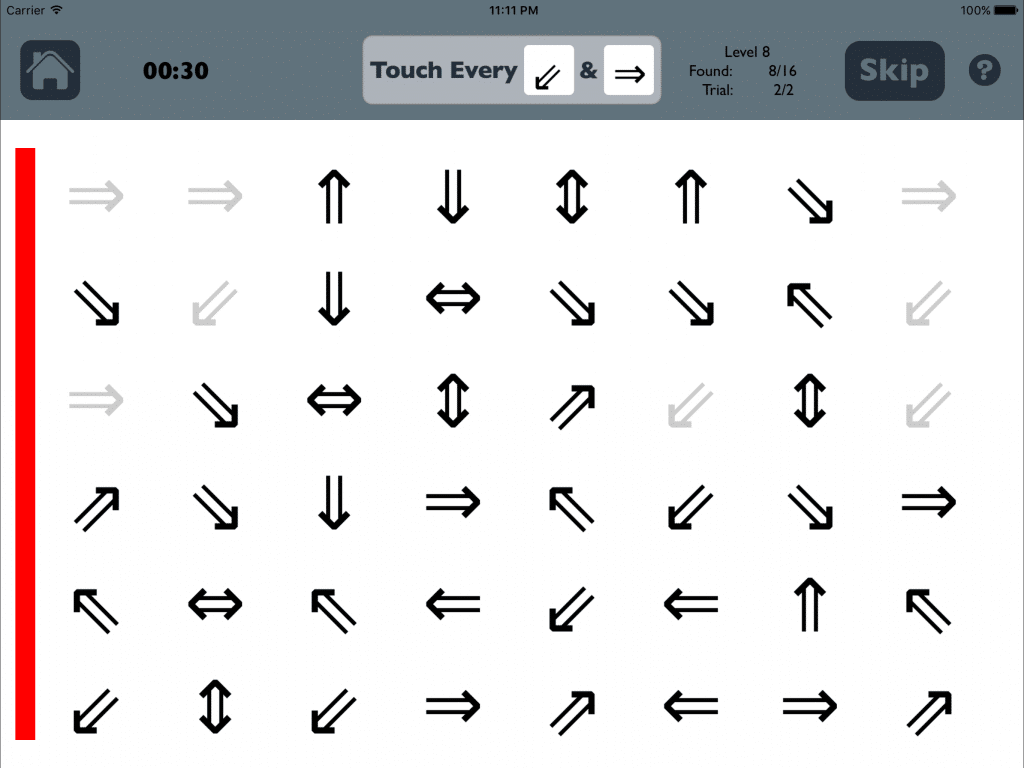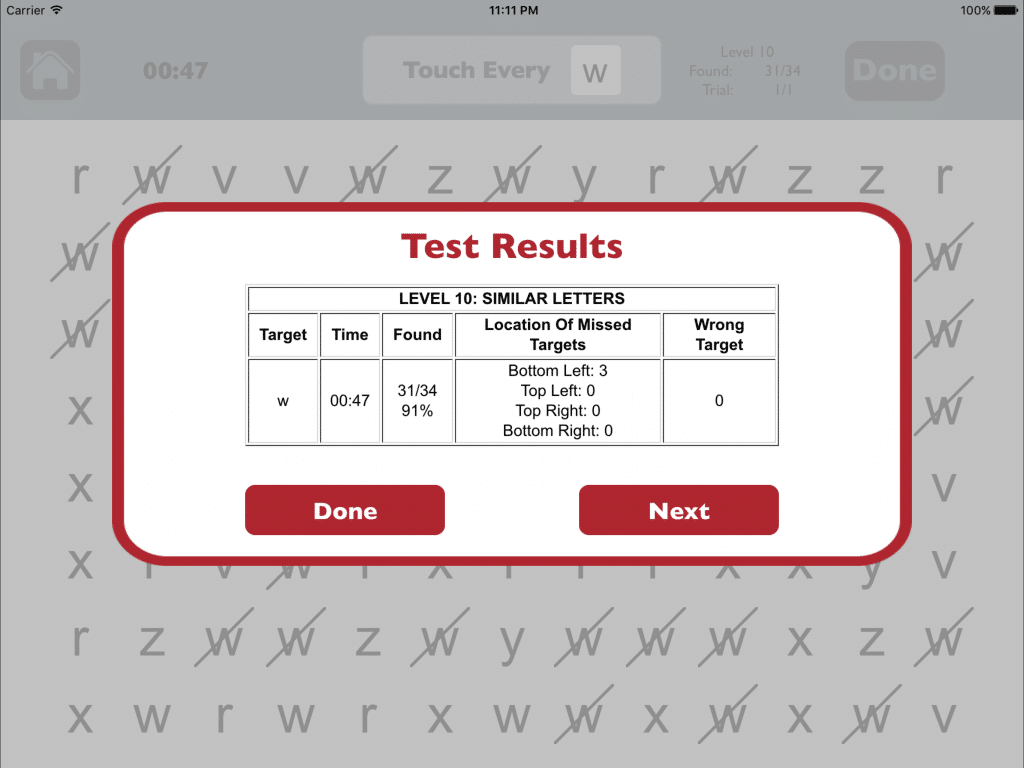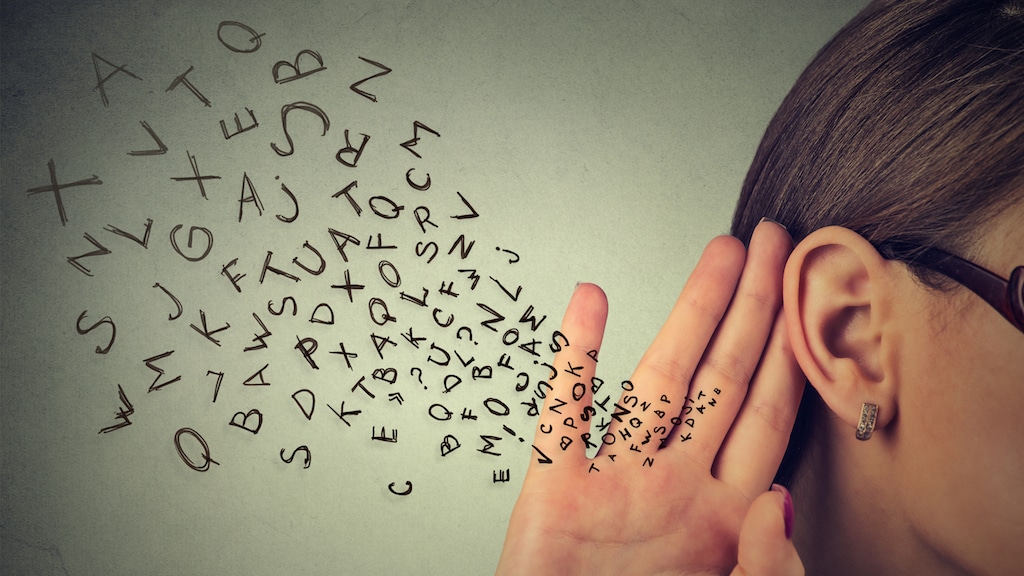How To: Visual Scanning Treatment for Neglect
7 min read
More than just sight, vision is the cognitive process of deriving meaning from what we see. Our brains must interpret the light entering our eyes to perceive the color, shape, size, and significance of what’s in front of us. Part of this complex process is focusing only on the visual information that matters, and filtering out the rest. This is called visual attention.
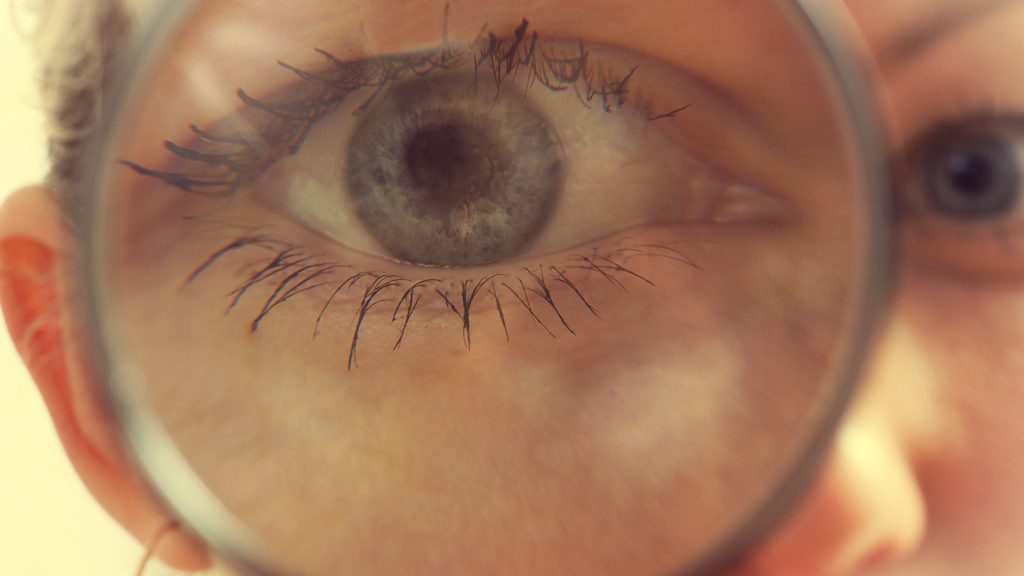
The Problem: Visual Neglect
Visual attention can be impaired by a stroke or traumatic brain injury, leaving the survivor with a condition known as visual inattention, or more commonly as neglect. It is marked by difficulty attending to and recognizing objects on the side of space opposite to the injured side of the brain. The person’s eyes may be working normally, but the way the information is being processed by the brain is impaired. While anyone can have visual neglect, it is far more common after damage to the right side of the brain, resulting in what’s known as left neglect.
Read more about left neglect assessment and treatment in this summary of an ASHA presentation by Dr. Margaret Blake. For the human side of living with left neglect, Lisa Genova’s Left Neglected offers a fictional account – linked halfway down this list of 12 stories about communication disorders.
People with visual neglect are unaware of anything or anyone on their affected side, which can seem very bizarre to others. It is almost as if one half of their world no longer exists. They may hear you but will not look at or acknowledge you until you move around to their non-affected side. They may only eat one half of the food on their plate, bump into people and objects on their affected side, and even wash, shave, or dress only one side of their body.
Despite adequate reading skills, people with neglect will not be able to make sense of a written page because they start halfway through each line. Regardless of gains in physical mobility, a person with neglect may always be at risk of falls or injury due to collision with some unperceived hazard “hiding” on the left. Interfering with nearly every functional activity of daily living, neglect can be pervasively disabling.
The Treatment: Visual Scanning Therapy
There is clear evidence that visual neglect can improve with treatment. A variety of techniques have been developed, but one of the most common therapeutic approaches is visual scanning. Visual scanning therapy (VST) aims to improve visual scanning behavior by encouraging patients with neglect to actively and consciously pay attention to stimuli on the affected side, usually by starting just a few degrees past midline, and going out from there.
Visual Scanning Therapy Activities
There are several therapeutic tasks you can do to help a person improve awareness of their neglected side:
Cancellation Tasks
A set of printed stimuli (usually letters, numbers, or symbols) is presented to the person with neglect, who is then asked to find and cross out, or cancel, a specific stimulus wherever it appears on the page. If the patient is encouraged to scan line by line, from left to right and top to bottom, this can help to improving reading skills as well.
The difficulty can be adjusted by varying the type of stimuli (letters vs. symbols), the visual similarity of the target to the distractors (stars among letters vs. letters among letters), the size of the set (number of rows and columns), and configuration of the set (random vs. organized in lines). In very severe cases, this task can be as simple as presenting two stimuli and asking the patient to cancel the one on the affected side.
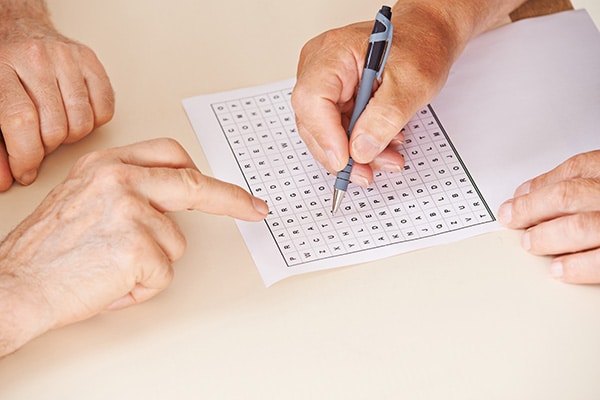
Reading Tasks
Put a bright line or colored tape down the left side of the page of books, newspapers, or magazines, so that the person first looks for the line to know where the line starts, and then practices reading from left to right. Add tactile reinforcement to help find the margin of the page on the neglected side by having the patient feel a Velcro or sandpaper strip at the left margin. Each line can be numbered if needed. The person can also be trained to follow each line with their finger to improve visual scanning, coming back to the edge each time.
Mealtime Activities
Make the meal therapeutic by sitting on the patient’s affected side and asking for eye contact when speaking. If the patient is being fed, ask the staff to do the same. Put brightly colored tape on the affected side of the table or tray to serve as an anchor line. Place utensils on the neglected side to encourage visual scanning.
For higher-level patients, you can draw attention to the side of neglect as you cook together. You can also have them search for safety hazards that you might set up on the affected side, such as running water, a burner left on, or a knife placed precariously.
Visual Search Tasks
Place common objects strategically in front of the person with neglect; then ask them to find specific items, including those you’ve placed on the affected side. Or lay out a suit of playing cards the patient must pick up in order. Verbal cues such as “look to the left” can help the patient remember to look further and give them a phrase to repeat when they’re searching for things on their own.
Games can be therapeutic and motivating visual search tasks too. Play “I Spy,” “Spot the Difference,” or complete word searches to encourage scanning of the full page or environment. Card games, board games, and computer games nearly always require good visual attention.
Navigation Tasks
Take the person with neglect for a walk or community outing. Encourage the patient to look at and describe things on the affected side. Have them use a map to navigate their surroundings or draw a map of their unit or home. Alternately, the patient can be asked to navigate web pages on the computer or complete mazes. It can be fun to put sticky notes numbered 1-10 on a wall in the hallway and have the patient find them in order.
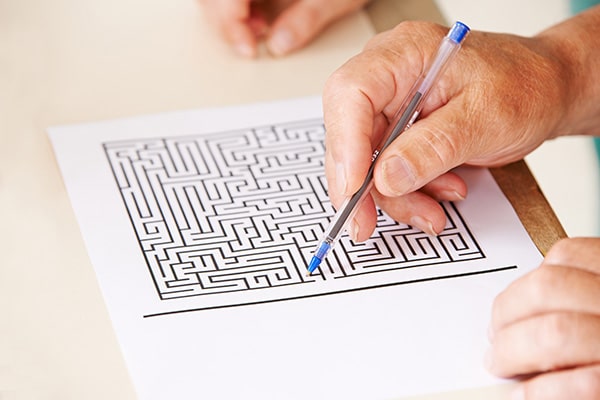
Download this “How To” guide now.
Get your free PDF on how to do Visual Scanning Treatment. Print & reference during treatment, share with students, or train families to work at home.
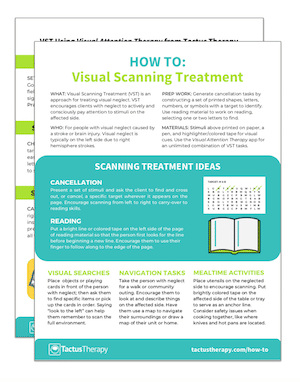
In addition to receiving your free download, you will also be added to our mailing list. You can unsubscribe at any time. Please make sure you read our Privacy Policy and Terms & Conditions.
Visual Scanning with the Visual Attention Therapy App
The Visual Attention Therapy app provides you with an unlimited combination of letter and symbol cancellation tasks at every skill level, replacing the thick book of paper-based activities you would need to customize the exercise for each patient.
The app also has the added advantage of automated timing, scoring, and feedback – saving you time and paper, while preventing calculation errors.
The Visual Attention Therapy app can be customized easily.
The user’s goal is to find 1 or 2 letters or symbols as quickly and efficiently as possible in a field of similar or dissimilar items. A sidebar signal can be set to flash in various colors, drawing attention to the left or the right side of the screen. Utilizing the evidence-based principles of VST, Visual Attention Therapy targets reading, concentration, memory, attention to detail, and speed of processing.
Instant results show which areas are being neglected.
The therapist can use the Test mode to quickly screen for the presence of a scanning deficit. Automated scoring provides data about the user’s accuracy in each quadrant, time required to complete tasks, and the number of mistakes. In Practice mode, the app provides the user with instant auditory and visual feedback, preventing them from moving on until they’ve found all the targets in order, allowing for faster learning and greater independence.
Other Tactus Therapy apps can also be used for scanning practice. Comprehension Therapy and the Understand activity in Number Therapy require users to scan options on the left and right of the screen to find the correct answer.
General Strategies for Visual Neglect
- Encourage staff and visitors to always sit on the affected side of the person with neglect. Hold the person’s hand on the affected side to draw their attention to this side.
- For people who like looking out the window or into the hallway, have their bed positioned so those things are on their affected side. Interesting items like colorful lights, photographs, or the television can be placed on the affected side as well.
- People with visual inattention should be encouraged to engage in important and/or risky activities when they are most alert. Their inattention is likely to be much worse when they are fatigued.
- People with visual inattention are often highly distractible and find it difficult to sustain their attention. Before they embark on any important tasks, try to reduce environmental distractions such as background noise and extra people.
- While challenging the affected side is therapeutic, if you have something very important to show them or tell them, do it on the strong side as not to frustrate the person.
We’ve listed just a handful of examples of the numerous visual scanning activities and strategies that can be done to improve visual attention. Treatment for neglect is likely to yield fast results, especially if the therapy task is similar to the desired outcome, provides feedback, is incorporated into functional tasks, is motivating, and is delivered intensively. Be creative!
Resources for Visual Scanning Therapy
For more information about left neglect, read What is Left Neglect. The Pathologically Speaking blog offers more ideas for treating visual inattention. See the Visual Attention Therapy app in action in this video about cognitive rehab after stroke.
You can always find the published evidence to support the design of Tactus Therapy apps on the Evidence page. Check out the references for Visual Attention Therapy, and read more about visual scanning treatment in these articles:
- Kerkhoff, G., & Schenk, T. (2012). Rehabilitation of neglect: an update. Neuropsychologia, 50(6), 1072-1079.
- Pizzamiglio, L., Guariglia, C., Antonucci, G., & Zoccolotti, P. (2006). Development of a rehabilitative program for unilateral neglect. Restorative neurology and neuroscience, 24(4-6), 337-345.

